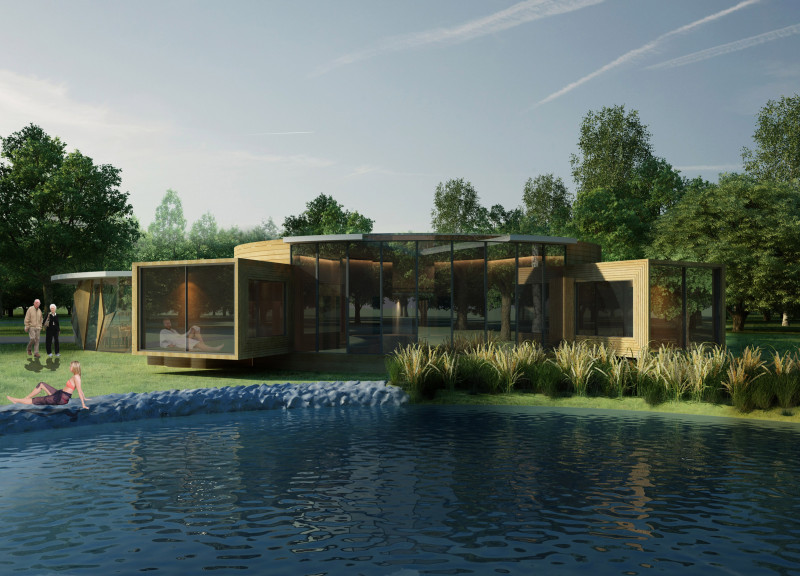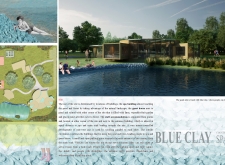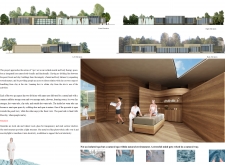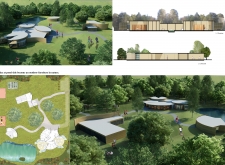5 key facts about this project
### Overview and Context
Located adjacent to a serene pond and a lush forest, the Blue Clay Country Spa is designed to harmonize wellness, nature, and sustainability. Its fundamental intent is to promote relaxation and rejuvenation while preserving the natural landscape. The incorporation of local materials, particularly blue clay, serves both therapeutic and architectural functions, establishing a connection between the built environment and its surroundings.
### Spatial Integration and User Experience
The design reflects a commitment to holistic well-being, emphasizing the integration of natural elements throughout the facility. Buildings feature fluid architectural forms with gentle curves that echo the landscape, creating a tranquil visual experience. The site layout is carefully planned to maximize views and accessibility, facilitating a range of activities from spa treatments to outdoor recreation. Specific areas, such as treatment rooms and relaxation zones, are designed with varying ceiling heights and wall configurations to enhance sensory engagement, while sliding doors facilitate a direct connection to nature.
### Material Selection and Sustainability
The project prioritizes the use of local and sustainable materials. Blue clay is artistically utilized at the pond’s edge, enhancing both the aesthetic and therapeutic qualities of the space. Walnut wood is integrated for structural and decorative purposes, contributing warmth while preserving ecological integrity. Expansive glass elements are incorporated to maximize natural light and blur the lines between interior and exterior spaces, further emphasizing transparency. Steel is employed strategically in the framing to ensure structural stability while supporting open, inviting environments. Outdoor features include landscaped areas and multifunctional clay structures, fostering engagement with the natural environment and promoting a sense of well-being among visitors.





















































